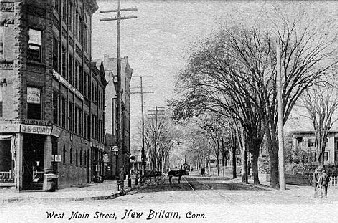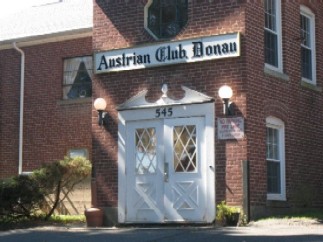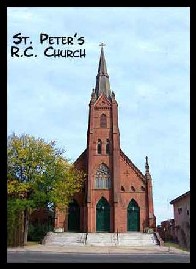![]() HOME
Connecticut Home
HOME
Connecticut Home
Connecticut Enclave Overview
Many of the
Burgenland immigrants who came to Connecticut settled in the New Britain area. Most came from the Jennersdorf
Bezirk and surrounding areas in the period from the 1890’s through the 1920’s.
 The
people who came were industrious and worked in the many factories of the area or were local shopkeepers. They lived
alongside one another in the downtown area of New Britain.
The
people who came were industrious and worked in the many factories of the area or were local shopkeepers. They lived
alongside one another in the downtown area of New Britain.
The immigrants
wanted to maintain their contact with family and friends and, as a result, formed a club where they gathered
regularly to sing the songs of the “Heimatland” and to socialize with one another. The beginning of the club
dates back to Feb. 6, 1906. It started as the Gesangverein Oesterreich, consisting of 10 singers who
practiced in the home of their conductor, A. Kuhn, on Arch Street.
 By
1908, the Verein had grown to 24 singers and even won a prize at the Staats Saengerfest held in
Meriden that year. The present day Donau Club was formed on Oct. 1, 1920, when four clubs came together to
establish the Oesterreich-Ungarishen Gesang und Krank Unterstuetzungs Vereins “Donau”. The first president of
the Club was John Ruck, who came from Minihof-Liebau. The club still serves today as a gathering place for
Burgenland descendants who want to keep traditions alive.
By
1908, the Verein had grown to 24 singers and even won a prize at the Staats Saengerfest held in
Meriden that year. The present day Donau Club was formed on Oct. 1, 1920, when four clubs came together to
establish the Oesterreich-Ungarishen Gesang und Krank Unterstuetzungs Vereins “Donau”. The first president of
the Club was John Ruck, who came from Minihof-Liebau. The club still serves today as a gathering place for
Burgenland descendants who want to keep traditions alive.
 Religion
was an important part of the immigrants’ lives. St. Peter’s was the church that the Catholics attended and St. John
Lutheran was the adopted church of many of the Protestants, of which there were a significant number in the
Jennersdorf Bezirk.
Religion
was an important part of the immigrants’ lives. St. Peter’s was the church that the Catholics attended and St. John
Lutheran was the adopted church of many of the Protestants, of which there were a significant number in the
Jennersdorf Bezirk.
Most of the
immigrants have passed away. Many of the Protestant Burgenlaenders are buried in Fairview Cemetery, while the
Catholics are buried in St. Mary’s Cemetery. Both are very nice cemeteries, and it is gratifying to see that the
final resting places for these brave and hearty individuals are maintained in such a meticulous manner.
Prepared by: Frank Paukowits, December 2009